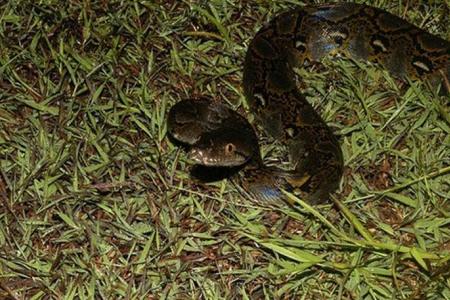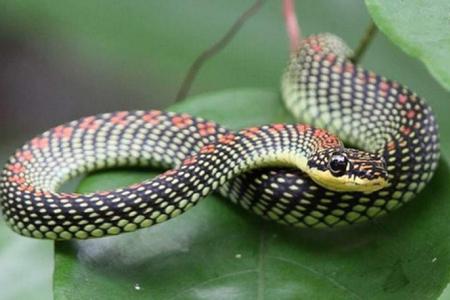What to do if you chance on a snake? Stay calm and back away slowly
When a rare but deadly banded krait slithered into view at Pasir Ris Park on Monday, it sent nature lovers and everyone else into a tizzy.
Top on the list of questions was whether it was normal for the venomous snake to be found so close to places that people frequent daily. Coming in a close second on the list were questions about what to do if one encounters a venomous snake in the wild.
Here are some less well-known facts about snakes in Singapore, and expert advice on what to do if you see one up close.
Q: How many types of snakes can be found in Singapore, and how large can they get?
A: Singapore is home to about 67 species of snakes, according to the National Parks Board (NParks) website. They can range from the brahminy blind snake – one of the world’s smallest snakes at about 20cm long and often mistaken for an earthworm – to the reticulated python, which can grow to a length of more than 9m.
Q: What are some common species?
A: One commonly sighted snake is the reticulated python. It is non-venomous and usually found in forest areas, but the occasional foray into drains, canals and sometimes homes is not unusual. Other non-venomous snakes in our backyard include the common wolf snake and the painted bronzeback, which is one of the most beautiful snakes found here.
Singapore is also home to some highly venomous snakes, such as the black spitting cobra. When threatened, the cobra will raise the front part of its body, flatten its hood and hiss loudly, according to the website of Our Wild Neighbours, an initiative to promote coexistence with Singapore’s native wildlife. Be cautious because the spitting cobra can spray its venom a distance of about 1m, often aiming for the eyes.
Some of the less deadly species are the mildly venomous paradise tree snake and the luminous green oriental whip snake.
Q: Why do snakes show up in urban areas?
A: Snakes can be found in urban areas where prey is abundant, says an NParks advisory on snakes. For example, the reticulated python travels through drains and canals in search of rats.
Mr Shivaram Rasu, a scientific officer at the Herpetological Society of Singapore, said the increased presence of rats, lizards and other animals that make up the diet of snakes, coupled with their shrinking natural habitats, will inadvertently bring snakes into urban areas.
The cold-blooded creatures can also be found basking on pavements and roads, using the heat radiating off these surfaces to regulate their temperature, says the NParks advisory.
Q: Do we really need snakes?
A: Snakes are a key part of a balanced ecosystem. They are vital components of the food web as predators of small animals and prey to larger mammals and birds. Snakes like pythons also help control local rodent populations, the NParks advisory says.
Q: What do I do if I see one?
A: Snakes are active throughout the year in Singapore due to the tropical climate. However, they are usually shy and will not attack unless disturbed or provoked.
According to NParks, if you encounter a snake in public, you should:
- Stay calm and back away slowly, giving it space to retreat.
- Not approach or attempt to handle the snake but leave it as it is, especially if it is in its natural habitat.
- Call NParks on 1800-476-1600 if you need help.
- Keep your pets on a tight leash as they might chase after the snake and frighten it.
If you find a slithery intruder in your home, you should:
- Keep your distance and call for professional help. The snake may try to look for a dark and secure area to hide.
- Observe the snake from a safe distance and let animal-management specialists know where the snake is so that they can locate it quickly when they get there.
- Make sure all family members, including young children and pets like dogs or cats, are kept away from where the snake is, as they may be curious and try to approach it.
- Keep all doors and windows that lead outside open for the snake to exit if it is found in a room. This provides an escape route for the creature.
- Remove food sources that might attract snakes. Waste that is not properly disposed of can attract pests and cause rodent infestation, drawing predators such as snakes.
- Additional reporting by Ang Qing
Get The New Paper on your phone with the free TNP app. Download from the Apple App Store or Google Play Store now



